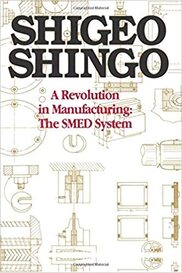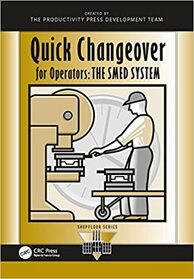|
If you travel into any machine shop, office or hospital facility in the world guaranteed you have seen a changeover before. The changeover occurs in between the last good part or service until the next good part or service. Some examples would be:
In about the late 1960's a brilliant industrial engineer by the name of Shigeo Shingo was given a challenge to increase the capacity of his shop floor without the use of excessive capital expenditures. In other words he could buy no machines. After watching the machines on the production floor, Dr. Shingo noticed a machine sitting idle. It was then that Dr. Shingo realized that by focusing on this "changeover" or "setup" time, production on the floor could be increased. He then set an objective saying that no changeover should take more than 10 minutes, in fact they should all be under 10 minutes. This is where the reference to "single" in single minute exchange of die comes from. Dr. Shingo outlined the SMED system in a book titled A revolution in Manufacturing, The SMED system. Although the original book is rather tough to locate its knowledge was captured in a later version entitled Quick Changeover the SMED system. Setup and changeover time can eat away time for value added activities such as transforming materials or treating patients. By focusing on reducing this changeover time companies can often reduce or improve setups or changeovers by more than 60%. How It is Performed?
Although we will not outline the details of Dr. Shingo's system described in the book, most systems are generally the same. However we do recommend getting a copy of the master's book and reading it. Here we will share with you some insight relating to our REDUCE methodology which is simply a mnemonic used to help others remember some key steps in the SMED system. It is based on Dr. Shingo's brilliant work.
Focusing on changeover and setup reduction can dramatically improve production time in an organization. Additionally it often results in lower operating costs, reduction of lot sizes, Improved response to demand placed on the organization and less inventory on all levels.
0 Comments
Your comment will be posted after it is approved.
Leave a Reply. |
AuthorClick Here to Submit Your Post on Listen to the Gemba. Archives
June 2024
Categories
All
Recommended Readings |





